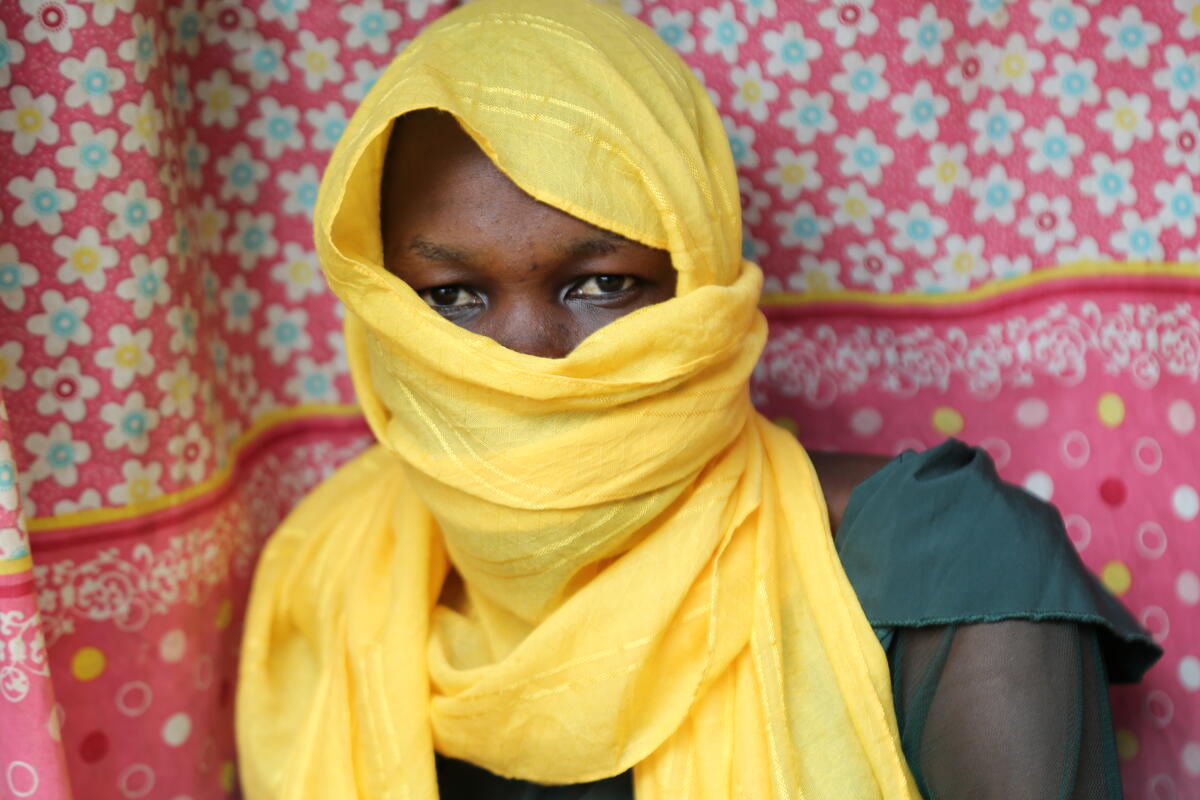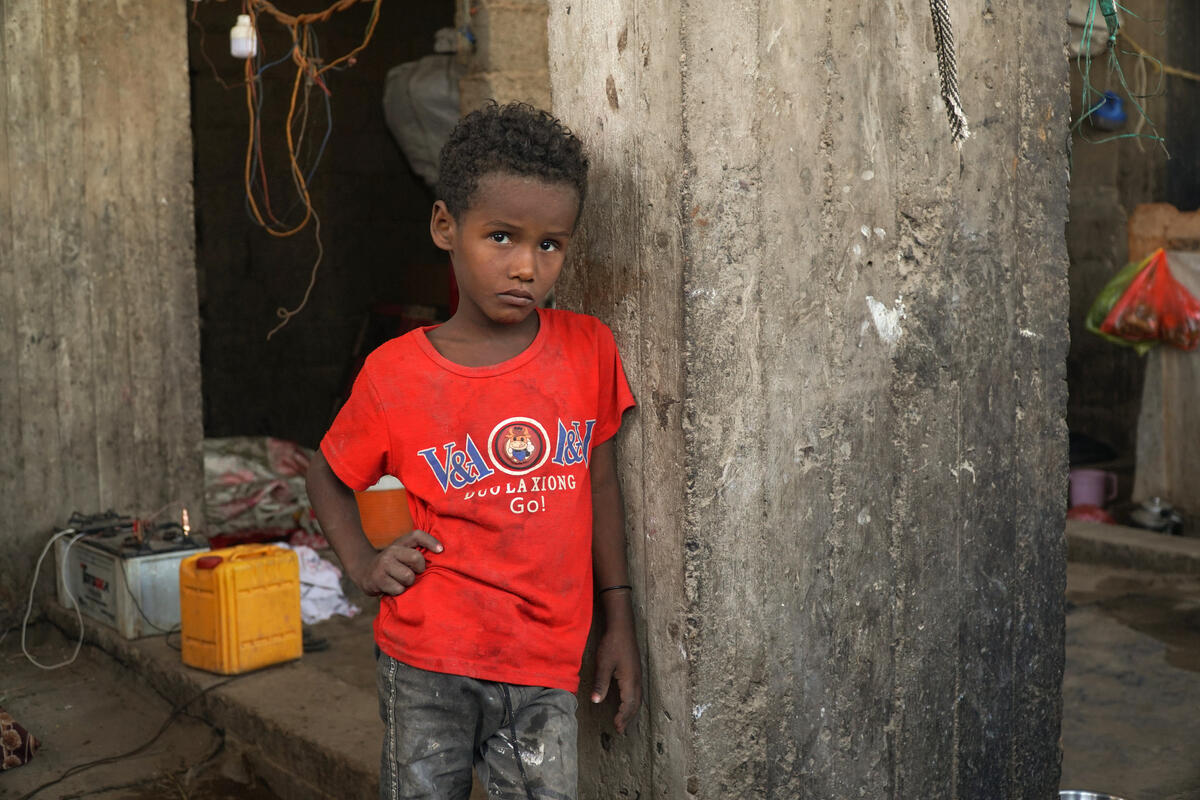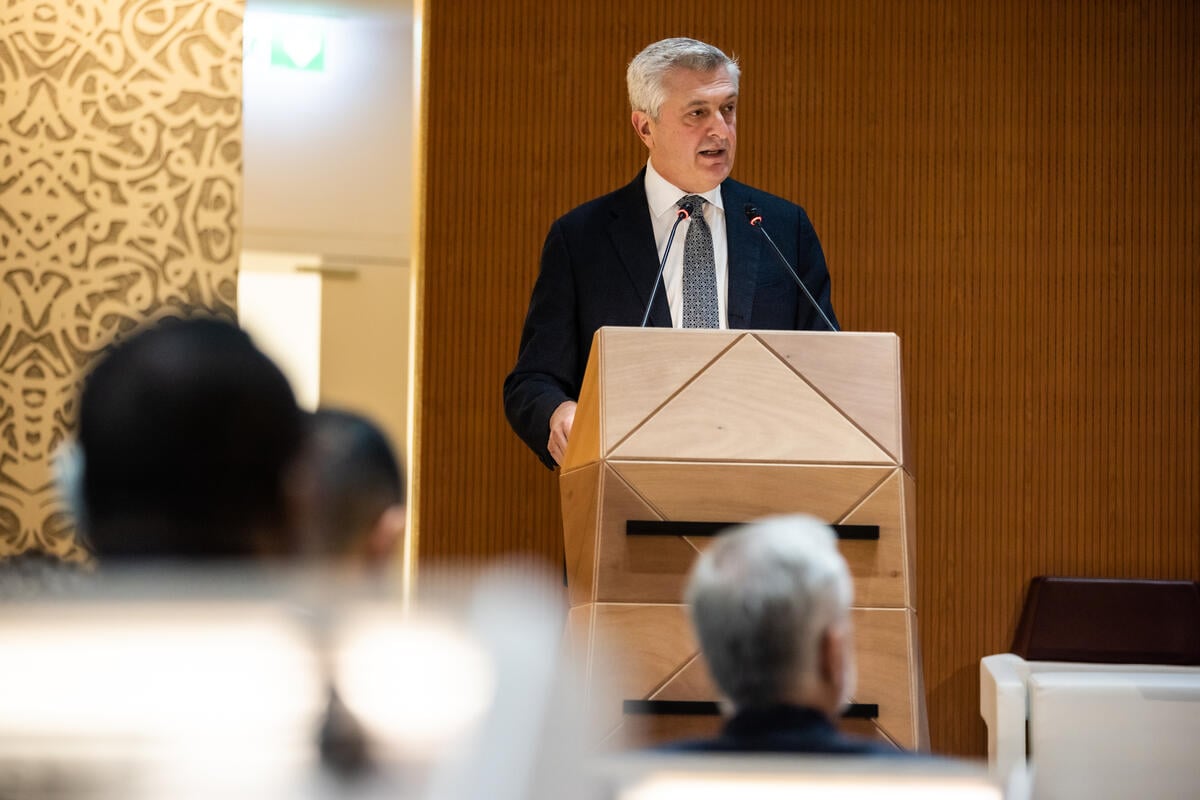South Sudan refugee outflow continues, UNHCR reports severe funding shortfall
South Sudan refugee outflow continues, UNHCR reports severe funding shortfall
In South Sudan a combination of new fighting in previously peaceful areas, food insecurity in Northern Bahr El Ghazal and Warrap States, and severe humanitarian funding shortages continues to cause a sharp worsening of the situation for many civilians. Recent fighting between government and opposition forces in Western Bahr al Ghazal has displaced more than 96,000 people to Wau town, in the north-west of the country. All neighbouring countries are now reporting rising refugee inflows. With the Regional Refugee Response Plan funded at just 8 per cent, many life-saving services are threatened. UNHCR is extremely concerned.
Sudan
An estimated 52,000 South Sudanese have fled into Sudan since late January, exceeding planning projections for 2016. At present they are mainly in East and South Darfur and West Kordofan. UNHCR non-food item distributions by truck in East Darfur are expected to begin on Wednesday and distributions have already taken place to all new arrivals in South Darfur and to some of the new population in West Kordofan. The World Food Programme has been distributing 1-month food rations to new arrivals in East and South Darfur, and is prepared to begin distributions in West Kordofan pending security clearance from authorities. Together with partner agencies a three-month response plan has been prepared to accommodate an additional 120,000 new arrivals before June.
Uganda
Uganda has seen a sharp increase in refugee arrivals from South Sudan since January, sometimes as many as 800 individuals per day. In all, 28,000 South Sudanese - 86 per cent of them women and children - have sought refuge in Uganda. The site where the South Sudanese refugees are sheltered, Maaji III in the north-west of the country, is nearing capacity and basic life-saving services and other services are severely stretched.
Ethiopia
Ethiopia, which hosts some 285,000 South Sudanese refugees, is seeing a recent - albeit more modest - increase in arrivals after a long period in which there were very few new refugees. Since 5 April, more than 300 new arrivals have been registered by at the Okugo refugee camp in the Gambella region. Most of the new arrivals, including dozens of unaccompanied and separated children, said they fled intra-ethnic clashes in Pochalla in the eastern part of South Sudan, and trekked in the jungle for several days before reaching Okugo. This recent spike in the rate of arrival from South Sudan followed a long lull with an average daily arrival rate of less than one for the past two months. UNHCR and partners have been providing basic assistance including corn soya blend to children, plastic sheets, mosquito nets, blankets, sleeping mats and water jerry cans at the camp.
Democratic Republic of the Congo
While fighting has subsided in the Western Equatoria region of South Sudan since February, some 12,000 people crossed into Democratic Republic of the Congo and sought shelter in the north-eastern province of Haut-Uélé in the past few months. The local communities have been welcoming of the refugees, and many of those who came at the end of 2015 have found shelter with local families. But capacities are stretched, and thousands of the more recent arrivals have settled in very precarious conditions. Strong rains on 14 April destroyed the makeshift shelters of refugees at a spontaneous site in the small town of Doruma, leaving them without a place to live. The area is difficult to access and there are few humanitarian organisations present.
Central African Republic
The conflict in Western Equatoria has also forced thousands of South Sudanese from Source Yubu and Ezo to cross the border and to seek asylum in the Central African Republic. As of 11 April, UNHCR had registered 10,454 South Sudanese refugees in the town of Bambouti, located in a difficult-to-reach area in the easternmost part of the Central African Republic. The new arrivals in Bambouti greatly outnumber the host community, estimated at around 950 inhabitants, putting a severe strain on resources. Many refugees are suffering from malaria, waterborne diseases and malnutrition. Access to potable water, food, healthcare, sanitation and shelter is urgently needed for the entire population. UNHCR led an inter-agency mission to Bambouti last month to assess the needs of the refugees, and organized a 12-truck convoy transporting food, medicine and emergency relief items, including blankets, kitchen sets and mosquito nets, which arrived on 7 April. Given that access to Bambouti from Bangui is difficult, UNHCR is currently exploring other options to provide urgently needed assistance, either by air or by road from Uganda.
Kenya
UNHCR's Kakuma Operation in north-eastern Kenya has recorded a steady increase in new arrivals from South Sudan, rising from an average of 100 people a month at the start of this year to 350 people a week over the past two months. So far, Kakuma camp hosts some 4,185 new South Sudanese refugees received in the year, the majority of whom are children and women, mostly from Eastern Equatoria, Upper Nile and Jonglei States, in the east of the country. They cite insecurity, intense famine and the high cost of living as the reasons for their flight.
2.3 million people have had to flee their homes since violence broke out in South Sudan in December 2013, 678,000 of these across borders as refugees and 1.69 million displaced inside the country.
For further information on this topic, please contact:
- In Juba, Rocco Nuri, +211 927 725 535, [email protected]
- In Kampala, Charles Yaxley, +256 776 720 045, [email protected]
- <li>In Kinshasa, Andreas Kirchhof, +243 81 700 9484, [email protected]
- In Khartoum, Mohamed Elfatih Elnaiem, +249 912 308 842, [email protected]
- In Bangui, Charles Mballa, +236 70552804, [email protected]
- In Addis Ababa, Kisut Gebre Egziabher, +251 911 20 89 01, [email protected]
- In Geneva, Nora Sturm, +41 79 200 76 18, [email protected]
- In Geneva (on mission), Teresa Ongaro, +254 735 337 608, [email protected]









